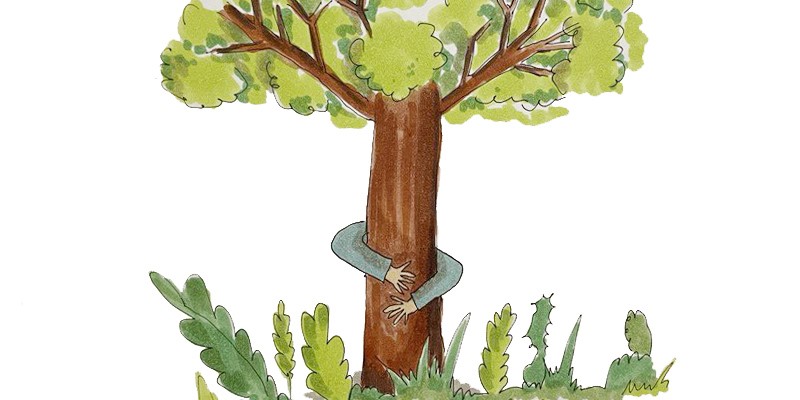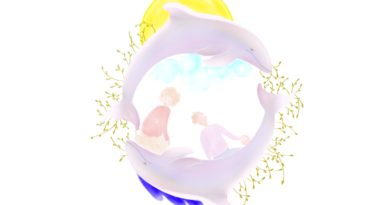Connecting with Nature
The climate crisis is in its eleventh hour. For more than 30 years we have known that we are making our own planet hotter – too hot for us to survive. Of course it’s only at the eleventh hour that we’ve taken enough notice to try to do something about it. Too little, too late? Maybe – but that doesn’t stop us wanting to try to mitigate the damage and to prepare for change; after all, we are all parents who have to pass our earth, our home, on to our children.
There is a whole raft of things we can do in our daily lives to try to reduce our impact on the environment and to reduce our carbon footprint. These have been covered in a million different articles in a million different publications (some are listed below). It is widely agreed that while we should all be doing our bit, the biggest change has to come from government and policymakers, which is beginning to happen – more and more countries have made promises to become “carbon neutral” by the middle of this century.
But even more important than teaching our kids to recycle is nurturing a deep connection to nature in the next generation of policymakers, leaders, workers, parents, and citizens – in our children. An emotional connection with nature is worth a thousand research papers on the “usefulness” of nature to mankind. There is an intrinsic value to nature that is worth more than all the rational accounting of economic benefits mankind gains from nature (“ecosystem services”). The more the intrinsic value is recognised and emotionally understood, the greater the likelihood the environment will be protected long term.
So. What can we do to encourage that bond with nature in our kids? Actually it’s quite easy, apart from the first bit, which is to tear our beloved offspring from their screens for a smidgen of time. Often easier said than done, but I promise you, it’s worth it. And a smidgen of time is all it takes. Step outside your door and walk around the block. With your eyes and ears open, see how many plants, flowers and trees you and the kids can spot. See how many different bird songs you can hear. See if you find any beetles, bees, butterflies or other insects. It doesn’t matter if you don’t know the names of the things, but if you, or your kids, are interested, there are simple guides available online, or in books, and I have listed some below. Try to make a habit of pointing out nature wherever you are. When you are waiting for the tram or walking to Spielgruppe, look to see what’s alive around you, instead of looking at your phone. Try “I Spy,” but with wildlife. Or see how many different colours of flower you can find. The possibilities are infinite.
The simple act of stopping to look around has the profound effect of disconnecting us from the virtual world being played on our devices and screens and in our heads. It has the effect of putting us in our place, of helping us recognise the (admittedly huge and one-sided) role we have as fellow animals in the ecosystem. Forget your worries about the next mortgage payment, or the waiting list for the desired school, or the sibling arguments between the kids, or even what you’re going to cook for dinner. For just a little while. Those worries won’t go away, and you will solve them all somehow, in your super-human role as parent, but listening to the birds for just two minutes is a wonderful tonic. More importantly, it opens our children’s eyes to the joy of the simple sound of a blackbird singing, of the sight of starlings swooping in astonishing murmurations, of the sparrows chattering in the hedge…the buzz of a bee in a flower.
Try it. Switch off the mental motorway of worries as often as possible and look around, eyes and ears open. Before you know it, the kids will be pointing things out to you. It’s an invaluable gift to them and to the planet to teach them this skill, and it will improve everyone’s happiness at the same time.
Written by Gnome (Katharine) Liston
Gnome (Katharine) Liston is resident in Zurich and Scotland, nurturing nature with her four kids, now teenagers. Trained in ecology, she is now focusing on growing organic fruit and vegetables, eggs, and honey to feed the family, and focusing on ceramics to feed her soul.
Illustration by Aleksandra Koroleva
Aleksandra, originally from Moscow, Russia, now lives in Adliswil with her husband and 6 year-old son. She specializes in clinical psychology and started studying illustration after her son’s birth. In her free time Aleksandra likes sleeping, just like all mothers do. https://www.instagram.com/uber_evil
Guides:
Collins Nature Guides: Birds of Britain and Europe, ISBN: 9780261647028
Collins Nature Guides: Garden Wildlife of Britain and Europe, ISBN: 9780261674080
(this one is particularly good as a starter book as it has a little of everything)
Collins Nature Guides: Wildflowers of Britain and Europe
Collins Nature Guides: Trees of Britain and Europe, ISBN: 9780261674011
Collins Nature Guides: Insects of Britain and Europe, ISBN: 9780007810192
Collins Nature Guides: Butterflies and Moths of Britain and Europe, ISBN: 9780261674042
…and many others. The above-mentioned titles are all available from www.northern-heritage.co.uk and other bookshops. There are so many different titles out there that it can be overwhelming. I have picked this series as they are short, simple and user friendly – a great place to start.
Apps and websites for identification and further information:
https://www.natureguides.com/projects
Chirp! Bird Songs UK & Europe – you have to pay for this app but it’s an excellent tool for getting to know the birds around you.
BirdID – European bird guide and quiz App from Nord University
Tree ID – British Trees App from the Woodland Trust. Obviously ideally for use in the UK, but the trees all exist in Switzerland, too!
PlantNet Plant Identification Great app
PlantSnap – Identify plants, flowers, trees and more
Seek – from iNaturalist, which is another, slightly more complicated, app.
Picture Insect – Bug Identifier app from Next Vision.
Insect Identification App for IOS (I couldn’t find it on Android)
There are lots more, but you have to start (and stop) somewhere!
Other resources for saving the planet with our kids:
https://onetreeplanted.org/blogs/stories/kids-eco-friendly-activities
https://www.greenmatch.co.uk/blog/how-to-be-more-eco-friendly



